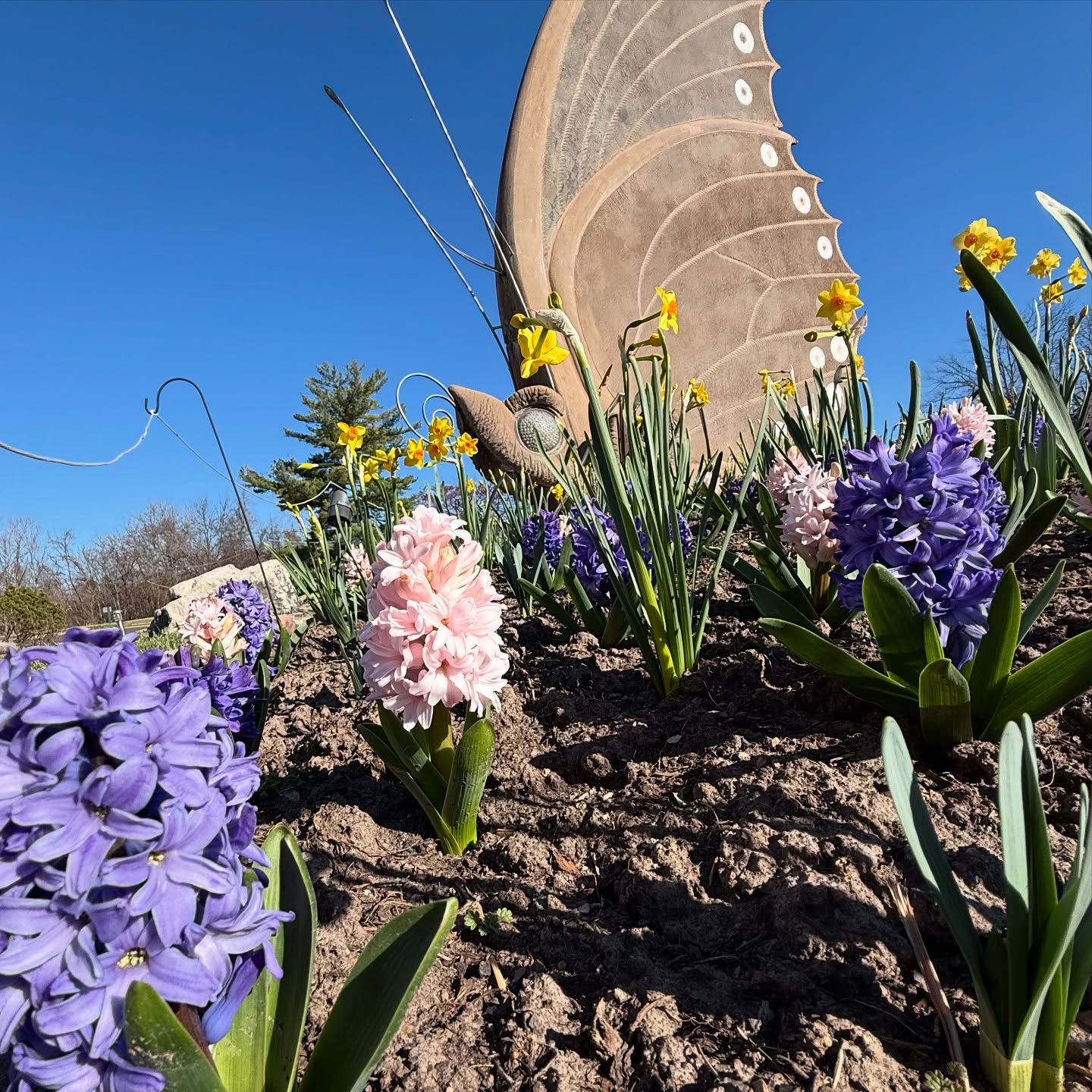- Explore the vibrant display and significance of spring blooms, emphasizing their role in attracting guests and pollinators like butterflies at the Butterfly House.
- Delve into the intricacies of maintaining a Butterfly House, including habitat management, species selection, and plant care.
- Examine the ecological importance of butterflies and their interactions with flowering plants, with a focus on conservation efforts and their role in ecosystems.
- Discuss zoo management strategies that prioritize sustainable practices, wildlife education, and visitor engagement to foster awareness and appreciation for biodiversity.
- Highlight ongoing wildlife conservation projects related to butterflies, emphasizing the challenges and successes in conserving these vital pollinators.
As spring blankets the landscape with hues of color and life, the alluring display of fragrant blooms greets visitors upon their arrival at the Butterfly House. These spectacular blossoms do more than just provide a visual feast; they serve an essential ecological function, attracting both human guests and a host of pollinators, especially butterflies. In their vibrant diversity, these flowers underscore the significance of spring, accentuating the bridge between cold dormancy and the energetic burst of life.
The spectacle of spring flowers not only enhances the visitor experience but plays a vital role in the delicate balance of attracting butterflies. Each bloom represents a carefully chosen component of the ecosystem within the Butterfly House. Through selecting plants that offer both nectar and habitat, the Butterfly House creates an environment where butterflies can thrive. This intentional planning ensures that the butterflies find both a food source and a breeding ground within the indoor gardens.
Managing a Butterfly House requires an understanding of various disciplines, from botany to entomology. It begins with the selection of plants, ensuring that they can provide the right conditions and sustenance needed for butterflies. Plant choice is critical, as it must accommodate the different stages of a butterfly’s life cycle while also fitting the climatic conditions of the Butterfly House. Careful consideration must be given to native versus exotic plant species, as each has its role in maintaining ecological balance and health.
Besides plant selection, climate control within the Butterfly House is crucial. Managing humidity, temperature, and light levels create an ideal microhabitat for butterflies and flowers alike. This microclimate supports not only the butterflies and their caterpillars but also the symbiotic organisms that contribute to the health of this enclosed ecosystem. By simulating ideal environmental conditions, the Butterfly House translates natural habitat functionality into a controlled setting, allowing species to flourish while providing educational opportunities for visitors.
Butterflies, acting as both pollinators and ambassadors, hold an esteemed position within ecosystems and society. Their presence in the Butterfly House serves as a living lecture, illustrating the principles of biodiversity, the chain of interdependencies, and the importance of conservation. Butterflies are not only agents of pollination, essential for the reproduction of many flowering plants, but they also play vital roles in the food chain, serving as prey for birds and other animals.
The conservation of butterfly species is a critical concern within the Butterfly House and broader ecosystems. Habitat destruction, pesticide use, and climate change threaten their populations worldwide. By cultivating an environment inside the Butterfly House that mirrors natural habitats, these institutions can aid in repopulating endangered butterfly species and preserving genetic diversity.
Zoo management strategies are increasingly focused on sustainability and education, emphasizing the importance of wildlife conservation. The Butterfly House embodies this strategy, fostering a connection between visitors and these gentle insects. Interactive displays, educational signage, and guided tours provide immersive experiences that enhance understanding and appreciation for the intricate relationships between plants and pollinators.
Visitor engagement is a pivotal aspect of zoo management. By incorporating both entertainment and education, the Butterfly House encourages curiosity and environmental stewardship among guests. This approach ensures that the visitor’s experience extends beyond passive observation; it becomes an active learning opportunity. Children and adults alike leave with a greater appreciation for the role of butterflies in our ecosystems and the urgency of conservation efforts.
Conservation projects centered on butterflies tackle various challenges, from habitat restoration to public awareness campaigns. In collaboration with environmental organizations, Butterfly Houses often participate in breeding programs designed to bolster populations of at-risk species. Public and private partnerships are instrumental in funding these initiatives, making it essential for institutions to highlight their successes to garner ongoing support.
Challenges such as habitat loss and climate change require adaptive strategies to ensure the survival of butterfly species. This involves both in-situ and ex-situ conservation techniques. While in-situ conservation preserves natural habitats, ex-situ efforts focus on breeding and maintaining healthy butterfly populations within controlled environments like the Butterfly House. By showcasing these conservation successes, the Butterfly House inspires visitors to contribute to wildlife protection efforts in their communities.
In sum, the Butterfly House presents spring as a vibrant celebration of life, interweaving education, conservation, and engaging experiences. Through the meticulous arrangement of flora and careful habitat management, butterflies are given the opportunity to thrive, each wingbeat an echo of survival, symbiosis, and sustainability. By aligning visitor enjoyment with ecological education, the Butterfly House not only brings the beauty of spring into the air but also ignites a lasting impact on conservation endeavors and environmental consciousness.
*****
Source Description
Spring is in the air! We are loving the fragrant blooms greeting our guests as they arrive for a day at the Butterfly House. 🌸 💜 🦋
📷: Paula Betz


